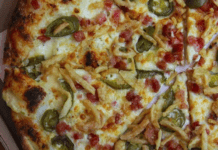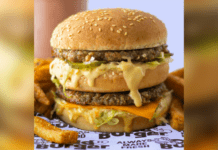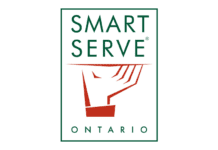In the movie “The Founder”, Michael Keaton channels Ray Kroc, the first CEO of the McDonalds franchise, in all his persistence, business acumen, and risk-taking mojo. In one poignant scene with first wife, played by Laura Dern, the former milkshake-machine salesman admits to remortgaging his house to kick start his little franchise idea. But a lot has happened since then. Kroc probably would never have imagined that 65 years later, an average of 2.5 million guests would visit McDonald’s restaurants each year in Canada alone, garnering the franchise annual sales of almost $4.5 billion in 2016.
Today, McDonald’s Restaurants of Canada Limited, operates more than 1,400 restaurants across the country, employing more than 80,000 Canadians. Great pride is taken in the fact that 80 per cent of its restaurants are locally owned and operated by independent entrepreneurs who live in the communities they serve. Even more Canadian pride has been ushered in with a new campaign to source sustainable, locally produced ingredients. It’s a huge feat that has a mammoth effect on the farmers and agricultural workers of this country. The stats speak for themselves. Annually, McDonald’s purchases 67 million pounds of ground beef — more than any other buyer in the Canadian restaurant industry; 143 million pounds of potatoes; 52 million pounds of chicken; 24 million litres of milk and cream; and 120 million eggs from Canadian sources. The Canadian-specific food purchases became a source of pride and McDonald’s soon showed off with its “Not-Without-Canadian-Farmers” campaign.
Of the $1 billion spent on food each year, nearly 85 per cent of that is Canadian sourced. It also contributes approximately $75 million in payroll taxes and benefits and $34 million in business taxes nationally, as well as more than $610 million annually in taxes through the generation of new jobs and additional purchases of goods and services from other Canadian businesses. Through its $1.5 billion annual expenditures on energy, maintenance, landscaping, operating supplies, wages and benefits, McDonald’s also injects approximately $4.2 million into local Canadian economies daily and $130 million in corporate income taxes annually.
But what does a 50th birthday represent to the restaurant icon? “It represents 50 years of me enjoying delicious McDonald’s hamburgers,” says Doug Fisher, president of FHG International Inc. in Toronto. “But seriously, from an operations standpoint, clearly they have been the industry leader from the beginning. They really set the standards in terms of health and safety, food delivery, corporate culture and marketing innovation.”
It may be surprising to hear, for example, that it was McDonald’s which stream-lined milk packaging by working with the dairy industry to package milk in square cardboard quarts rather than glass bottles. “But they were also instrumental in establishing standards such as drink size, hamburger quality and taste, and percentages around how much should go to marketing,” says Fisher. “Other franchises such as Tim Hortons could look to their example and then flourish based on what they had already set in place in the foodservice industry. They’re different of course, especially with respect to their food prep, but standardization was already put into place.”
In terms of corporate and operational culture, Fisher says McDonald’s has been the model for how to treat people — not only the executives but the franschisees themselves. “When you look back on McDonald’s history, there’s very little by way of litigation between franchisee and the larger corporation,” explains Fisher. “In part, this can be explained through the intensity of the training programs, but it also indicates that care has been shown and an investment is made in the relationship.”
John Betts, CEO of McDonald’s Canada, agrees with the sentiment. Ideological in his framework, Betts believes every CEO should be in constant communication with operators at all levels of the operation in an effort to stretch the brand as far as it can go. “There’s a real opportunity for CEOs in the food industry to realize that it’s not only about making customers happy, but about how you can accomplish things throughout your organization,” says Betts. “As the CEO, you are the one who sets the tone.” Betts notes that when he took over the business in 2008, McDonald’s ranked number seven in the restaurant sector for comparable sales and guest-count growth over the past 10 years. “A lot of those results came from playing it safe,” says Betts. To transform the brand, he reached out to franchisees to hear first-hand what their priorities were.
From those meetings, Betts began to lure in more customers with a different demographic profile through his coffee-giveaway program. “We gave away 150 million cups of coffee for free over a seven-year period,” says Betts. “No other operation can say the same. Since then, we’ve grown our breakfast revenue and guest counts by more than 100 per cent.” This year also saw the launch of an all-day breakfast program. It started with a few tweets from McDonald’s customers lamenting that the 11 a.m. deadline for purchase had passed. After hosting the program in a couple of trial operations, McDonald’s has rolled it out to every franchise with great success (exact numbers are still being tallied for this fiscal year).
The McCafé concept has grown exponentially, with a number of dedicated McCafé outlets already in operation in downtown Toronto, including one for hurried commuters at Union Station. Specifically, Betts states that McDonald’s has doubled its breakfast business over the past five years, ever since it introduced its McCafé products in 2011. Aiming for the “Parisian” café experience, McDonald’s features espresso-based drinks, specialty coffees, fruit smoothies and pâtisserie alongside its classic Egg McMuffin breakfast sandwich.
In pursuit of the healthy consumer, McCafé also features salads and wraps in a marked departure from its standard burgers and fries. Anyone craving a kale and Brussel sprouts salad with mixed veggies? You can get this at McCafé. Even sandwiches are upgraded with artisanal bread. McCafé outlets also feature a notably different interior decor — one that is light and airy, featuring white tiles and modern fixtures. It’s more like walking into a designer condo than a fast-food restaurant’s sister franchise project.
While McDonald’s successes are numerous, they nearly faced extinction in both 2001 and then during the housing crisis of 2008. In part, the health push came from this moment, when Betts entered the picture and business was at a low point. “In part, we weren’t paying close enough attention to our guests,” says Betts. “We really had to tap into their new food needs and their concern around health.” In 2011, the company made a $1-billion investment in a restaurant-makeover initiative that changed the brand to reflect a more urban, connected vibe. Wi-Fi was offered at most locations and fireplaces were installed, as well as new technological touches, such as flat-screen televisions.
Despite the drop in sales during these two critical periods, McDonald’s reinvented itself in a way that mirrored the current interests and tastes of a changing Canadian consumer. “In 2001, my take is that they lost their focus. They got off their game,” says Fisher. “Then the recession in 2008 and the rise in millennial patronage of the fast-casual segment really created challenges for the business model.” Fisher says that since that time, McDonald’s has remained in touch with the millennial generation and its ways of technologically interacting.
In 2016, McDonald’s invented the perfect millennial interface — the self-order kiosk. Set up like a large iPad, the screen allowed guests to create their own burgers and have them delivered to the table. It should be noted that customization is a huge foodservice trend for millennials, who are often identified as being as fickle with their taste profiles as they are with their brand loyalty. The “Create-Your-Taste” menu meant that customers could choose from more than 30 different options to make their perfect burger. It meant not only choosing their bun, but customers could also opt out of the bun entirely and choose a lettuce wrap. Five cheeses were on offer, as well as different toppings, including sriracha, guacamole, sundried-tomato pesto and chipotle aioli.
Betts describes this move as transitioning from a “transactional-based brand” to one focused on the customer. With this future in mind, the company hired 3,000 people to be brand ambassadors to greet customers and help teach non-techie guests how to use the kiosks. “It’s about really listening to your customers,” says Betts.
“To reinvent yourself is not a small business,” says Fisher. “Think about how significant a turnaround that would be with a ship of 80,000 employees and 1,400 restaurants in the country.”
Coordinating the shift wasn’t easy, but Betts notes that reinvention has now become a part of the brand’s profile. “We’re building on everything we already accomplished to create a brand experience that’s unmatched by anyone else,” he says.
In addressing the current needs of customers, McDonald’s has committed to even more healthy and sustainable ingredients. By 2015, the company committed to accepting only Canadian, cage-free (or free-run) eggs. By the end of 2018, it will have phased out all chicken that is raised with antibiotics.
It has also decreased the sodium in nearly 50 food items and switched to using trans-fat-free cooking oil. With nutritional info being made available online in a 2012 campaign called “Our Food. Your Questions” — the company actually challenged customers to launch their toughest questions about ingredients and processes. The company also began displaying calorie counts beside prices — for both sandwiches and meals. You’ll even see these when going through the drive-thru.
The future of McDonald’s, for Betts, means even more growth, transparency and shifts towards cleaner foods.
It’s hard to imagine what the future of healthy eating at McDonald’s will look like. But if history has guarantees, it’s that the future of the brand is bound to be delicious.
Volume 50, Number 3
Written by Jennifer Febbraro

















